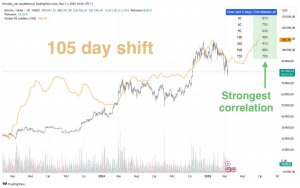Is Your Capital Structure Future-Proof?

A company funds its operations and growth by raising capital, which can be achieved by issuing either debt (in the form of loans or issuing bonds) or equity (in the form of common stock, preferred stock, or retained earnings) (Tuovila, 2019).
The proportion of debt and equity a company maintains is its capital structure and is measured primarily by the debt-to-equity (D/E) ratio (Tuovila, 2019).

There is no universal optimal capital structure as healthy debt and equity depend upon many variables including the company’s industry, line of business, and stage of development (Loth, 2019). However, there are general guides that a company can follow to achieve a healthy balance of debt and equity (Loth, 2019). And, as Chaplinsky and Harris (1996) argue, good capital structure strategy can ultimately increase a company’s value.
Loth (2019) suggests that a company’s capital structure strategy will be based on how both debt and equity are viewed from the perspective of the business owners, investors, banks, ratings agencies, and regulators.
Debt is less costly to the business since interest on debt is usually tax-deductible (Hayes, 2019), and so it is preferred by business owners. During times of low interest rates, debt is also readily available (Tuovila, 2019). At the same time, issuing debt comes with the risks of having to pay back the debt and the associated potential risk of not being able to make payments (Kokemuller, n.d.). Too much debt can be a red flag for lenders (Gete & Gomez).
On the other hand, issuing equity means the company does not get the tax benefit of debt, but it does mean the company gains capital without the risk of having to pay it back (Kokemuller, n.d.), which is attractive to banks and ratings agencies. The main drawback is that it must expand ownership and risk dilution (Hayes, 2019). One other drawback to issuing more equity is that it indicates a more conservative growth strategy, which might be less appealing to investors (Tuovila, 2019).
References
Chaplinsky, S., Harris, R. (1996) Capital structure theory: a current perspective. Retrieved from https://hbsp.harvard.edu/download?url=%2Fcourses%2F688826%2Fitems%2FUV0105-PDF-ENG%2Fcontent&metadata=e30%3D
Gete, P., and Gomez, J. P. (2017). Dealing with overleverage: restricting leverage vs. restricting variable compensation. Retreived from https://mpra.ub.uni-muenchen.de/80642/1/MPRA_paper_80642.pdf
Hayes, A. (2019). Investopedia: Optimal capital structure. Retrieved from https://www.investopedia.com/terms/o/optimal-capital-structure.asp
Kokemuller N. (n.d.). Chron: What are the risks of debt capital financing?. Retreived from https://smallbusiness.chron.com/risks-debt-capital-financing-66407.html
Loth, R. (2019). Investopedia: Analyzing a company’s capital structure. Retrieved from https://www.investopedia.com/articles/basics/06/capitalstructure.asp
Tuovila, A. (2019). Investopedia: Capital structure. Retrieved from https://www.investopedia.com/terms/c/capitalstructure.asp






